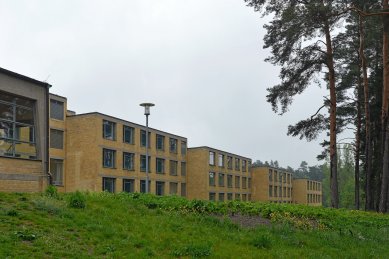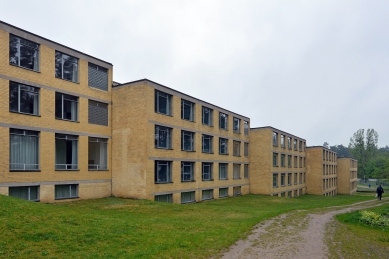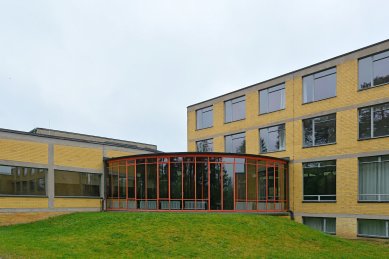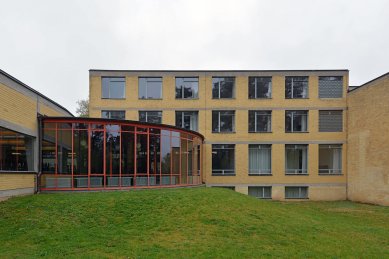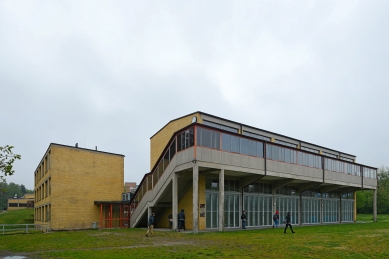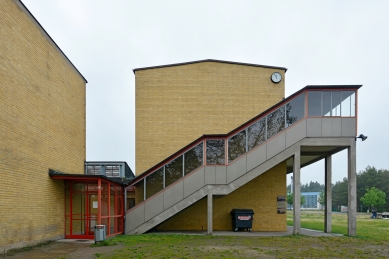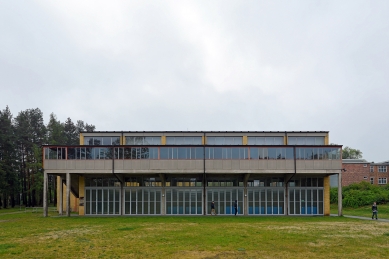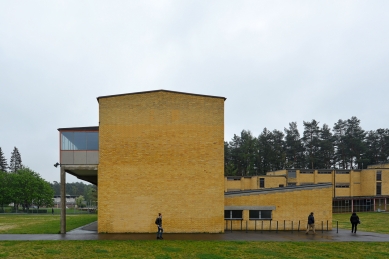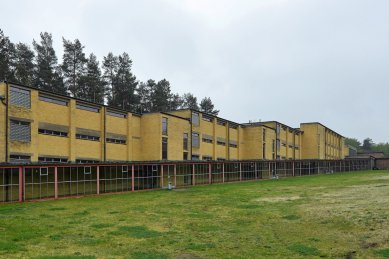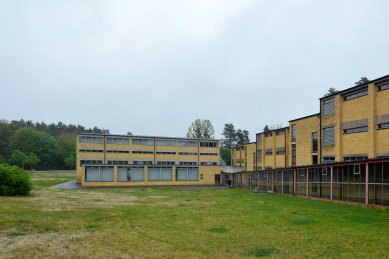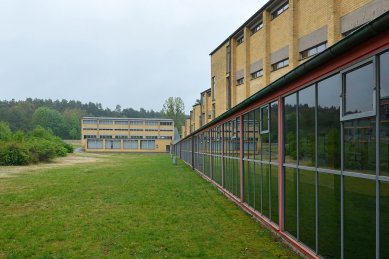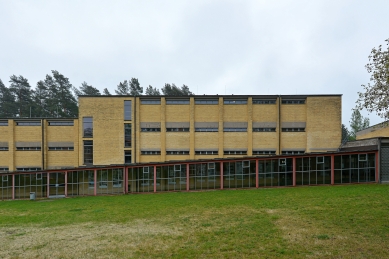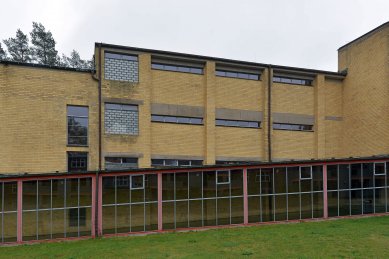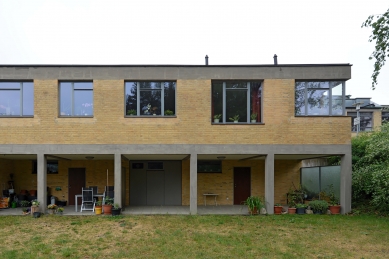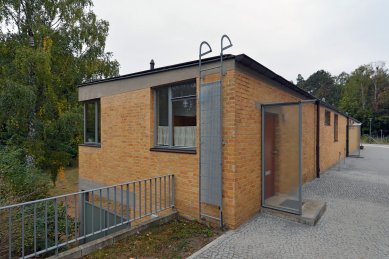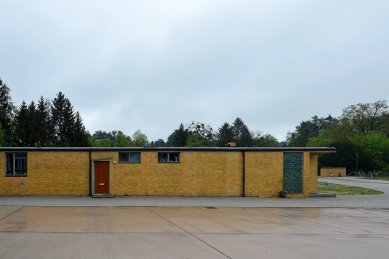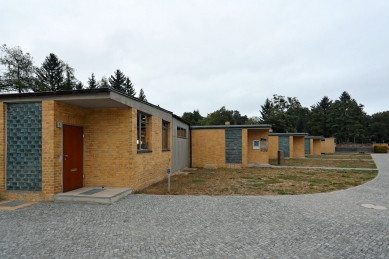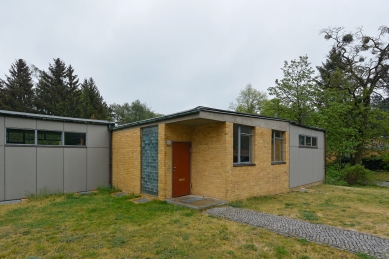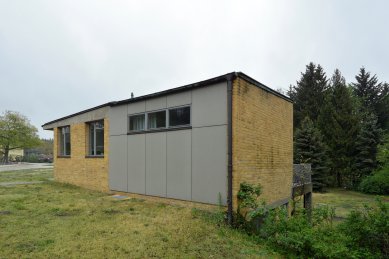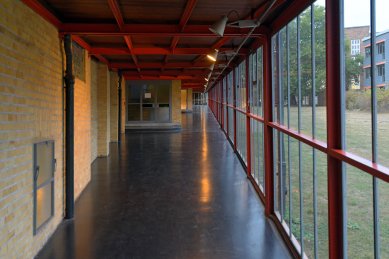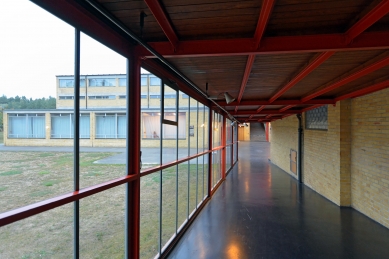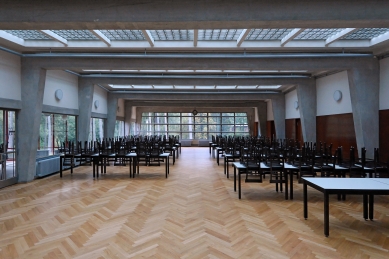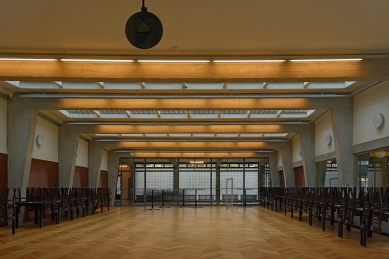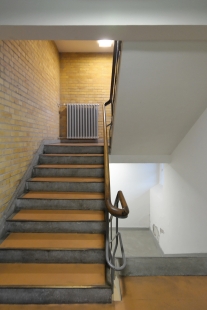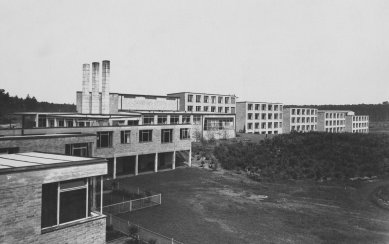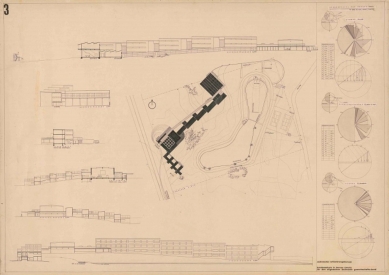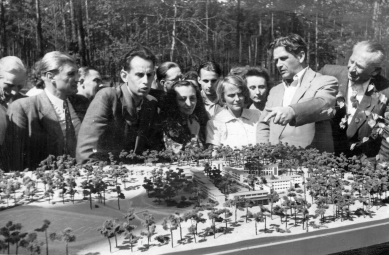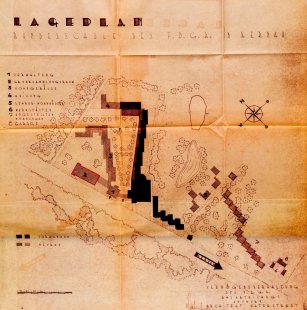
Former Union School
Former Federal School of the ADGB

Swiss architect Hannes Meyer, historically the second director of the Bauhaus, is associated with political turbulence at the school, leftist direction, and a tumultuous dismissal from his position. These controversies often overshadow the undeniable quality of Meyer’s architectural designs. Among the best-preserved is the school complex of the former Federation of German Trade Unions (Bundesschule des Allgemeinen Deutschen Gewerkschaftsbundes, ADGB) located 10 km northeast of Berlin in the town of Bernau. The urban concept is based on a pavilion principle similar to the Bauhaus school in Dessau. In this case, however, the slightly sloping site had to be taken into account, the teachers' houses are next door, and the student dormitories have significantly larger capacity (60 double rooms). The union school near Berlin emerged from a competition, where six architects were invited in 1928. Meyer completed the school two years later, at which time he was simultaneously dismissed from the management of the Bauhaus and moved to Moscow, where he was appointed professor at the Soviet Academy of Architecture and Civil Engineering WASI.
Meyer designed the Berlin school together with Swiss colleague Hans Wittwer, who taught theory at the Bauhaus. Bauhaus students were involved not only in the design but also contributed to the construction and interior fittings. Part of the urban plan included, in addition to the school in the pine grove, the establishment of sports facilities with playing fields, a 50 m swimming pool, and the incorporation of a natural lake for leisure activities. The school was to accommodate 120 workers in four-week shifts, where they were to be educated in trade union movement, corporate administration, economics, insurance, labor law, social policy, and industrial hygiene. In 1993, the school was forcibly occupied, and the NSDAP established a center there; in 1936, members of the leadership of the gestapo and SS were educated here. In the summer of 1939, SS members planned the attack on the radio station in Gliwice here (a sabotage action that provided the pretext for the outbreak of World War II). After the war, the buildings served as a military hospital for the Red Army. In 1946, the structure was handed over to the newly established East German government, which reused it as a school from 1951 renamed the Fritz Heckert Vocational Academy. In the 1950s, the complex was expanded according to a design by East German architect Georg Waterstradt. Since 1977, the ADGB in Bernau has been a protected monument, and in July 2017 it was inscribed on the UNESCO World Heritage List together with the school campuses in Weimar and Dessau.
Meyer designed the Berlin school together with Swiss colleague Hans Wittwer, who taught theory at the Bauhaus. Bauhaus students were involved not only in the design but also contributed to the construction and interior fittings. Part of the urban plan included, in addition to the school in the pine grove, the establishment of sports facilities with playing fields, a 50 m swimming pool, and the incorporation of a natural lake for leisure activities. The school was to accommodate 120 workers in four-week shifts, where they were to be educated in trade union movement, corporate administration, economics, insurance, labor law, social policy, and industrial hygiene. In 1993, the school was forcibly occupied, and the NSDAP established a center there; in 1936, members of the leadership of the gestapo and SS were educated here. In the summer of 1939, SS members planned the attack on the radio station in Gliwice here (a sabotage action that provided the pretext for the outbreak of World War II). After the war, the buildings served as a military hospital for the Red Army. In 1946, the structure was handed over to the newly established East German government, which reused it as a school from 1951 renamed the Fritz Heckert Vocational Academy. In the 1950s, the complex was expanded according to a design by East German architect Georg Waterstradt. Since 1977, the ADGB in Bernau has been a protected monument, and in July 2017 it was inscribed on the UNESCO World Heritage List together with the school campuses in Weimar and Dessau.
The English translation is powered by AI tool. Switch to Czech to view the original text source.
0 comments
add comment


